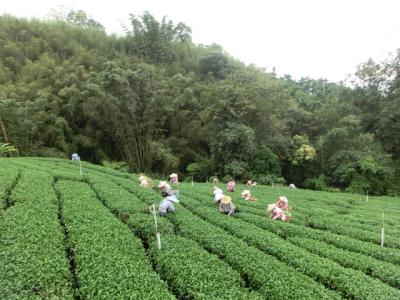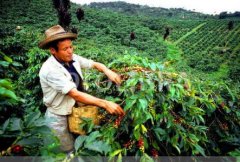A brief introduction to the market price of spicy and exciting Yemeni boutique coffee beans

The price of Yemeni coffee in the international market has not been low, mainly because Yemeni coffee is very popular in countries and regions where "Turkish" coffee is popular. In Saudi Arabia, the Yemeni mocha is so spoiled that people there are willing to pay a high price for low-quality mocha coffee. This special fondness for mocha keeps the price of mocha coffee high in the world coffee market.
The oldest coffee in the world-- Yemeni mocha coffee
Origin: Yemen
Grade: excellent
Particles: full
Acidity: slightly sour and strong aftereffect, but also sweet
Evenness: relatively stable
Baking: medium
Flavor: chocolate, slightly alcoholic, spicy
Mocha coffee (CafeMocha) is one of the oldest coffee, its history can be traced back to the origin of coffee. It is a mixture of Italian espresso, chocolate sauce, whipped cream and milk. Mocha gets its name from the famous port of Mocha. In the 15th century, the outward transportation industry of the whole coffee country in Central and East Africa did not flourish. Yemeni Mocha was a major commercial port near the Red Sea at that time. At that time, coffee was mainly concentrated in the port of Mocha and then exported to Africa, which was collectively called mocha coffee. Although the emerging port replaced the status of the port of Mocha, the origin of mocha coffee remained during the period of the port of Mocha, and the coffee beans produced in these areas are still known as mocha coffee beans.
Mocha coffee (also known as mocha or mocha, also translated as Arabian premium coffee, English cafe Mocha, meaning chocolate coffee) is a variant of Italian latte (Cafe Latt é). Like the classic Italian latte, it is usually made of 1/3 Caff è Espresso and 2/3 foam, but it is also mixed with a small amount of chocolate. Chocolate is usually added in the form of chocolate syrup, but some coffee selling systems are replaced by instant chocolate powder. Sometimes, whipped cream, cocoa powder, and cotton candy are added to add to the aroma of coffee and as a decoration. Unlike the Italian Cappuccino, there is no milk foam on the mocha. Instead, mocha coffee is usually topped with cream and cinnamon or cocoa powder. It is also possible to add sunflower honey powder to the surface as a decoration and add flavor. One variant of mocha is White Cafe Mocha, which uses white chocolate instead of milk and dark chocolate. In addition to white mocha, there are some variants that are mixed with two kinds of chocolate syrup, sometimes called "Zebras" and sometimes comically called "tuxedo mocha" (Tuxedo Mocha).
In some parts of Europe and the Middle East, Moccaccino is used to describe Italian lattes with cocoa or chocolate. In the United States, mocaccio refers to an Italian cappuccino with chocolate.
With the birth of Italian fancy coffee, people try to add chocolate to ordinary coffee instead of mocha, which is now often available. Italian fancy mocha coffee, by mixing Italian espresso Espresso from 1 to 3, hot milk from 2 to 3, and then adding chocolate. The traditional Italian fancy mocha uses chocolate syrup as the raw material, and because mocha is so popular that more home-made mochas are replaced by chocolate powder. Today's mocha coffee in addition to dark chocolate, milk chocolate can also be used as one of the ingredients. Unlike cappuccino's thick milk foam, mocha has no milk foam at the top and is replaced by whipped cream with cocoa powder and cinnamon. Candied fruit is also used as an ornament for mocha coffee on top.
Therefore, the so-called mocha coffee is actually the general name of mocha bean coffee and fancy mocha coffee. Tasters must pay attention to this when tasting mocha coffee, lest the coffee ordered is not the mocha coffee in mind.
Although Ethiopia was the first country in the world to discover coffee, Yemen was the first country in the world to produce coffee as a crop on a large scale. In the 17th century, the first batch of Yemeni coffee was exported to Europe through the ancient port of Mocha, which is the origin of the name mocha coffee. Ethiopia, across the sea from Yemen, also sells coffee through the port of Mocha, so Ethiopian sun-treated coffee is often referred to as mocha (such as Harald ETHIOPIA HARRAR, Ethiopia). The Yemeni mocha, the originator of the coffee trade of the World Office, played an important role in promoting delicious coffee all over the world. It was called "Arabica coffee (Arabia)" in the 17th century, which is the origin of the name "Arabica original".
The Yemeni mocha coffee has distinct taste characteristics, special taste and varied levels. It has a strong sour taste, a pleasant fruit acidity, and an obvious chocolate taste. The stronger the coffee is, the easier it is to taste the chocolate. Therefore, in order to better understand the unique taste of Yemeni mocha coffee, people now add hot chocolate to make fancy mocha coffee.
Mocha beans are smaller, rounder and light green than most coffee beans, which makes mocha beans look more like peas. Mocha coffee beans are similar in shape to Ethiopia's Harald coffee beans, with small particles, high acidity and a strange and indescribable spicy flavor.
Important Notice :
前街咖啡 FrontStreet Coffee has moved to new addredd:
FrontStreet Coffee Address: 315,Donghua East Road,GuangZhou
Tel:020 38364473
- Prev

A brief introduction to the history and culture of the origin and development of Yemeni boutique coffee beans with complete grain shape
Matari coffee originates from and around the Mattar region in the west of Sana 'a. it is the best-known Moha coffee with unique flavor. Coffee beans have chocolate color, complete grain shape, but fruit wine and seasoning flavor. Isemary coffee is the rarest variety of Moha coffee. Produced in the highest altitude areas of Yemen, the output is very limited and expensive, but there are fruit wine, spices, nuts, malt and other flavors.
- Next

A brief introduction to the cultivation of Yemeni boutique coffee beans with unique fragrance, geographical location, climate and altitude
Yemeni coffee is also picked and processed entirely by hand. The preliminary processing of coffee beans is made by drying and drying naturally in the sun. This method is the most primitive and simple, without any machinery or cleaning, so sometimes there are a small amount of sand and pebbles in Yemeni coffee beans. At present, dry is still used only in Brazil, Haiti and a few parts of India.
Related
- Detailed explanation of Jadeite planting Land in Panamanian Jadeite Manor introduction to the grading system of Jadeite competitive bidding, Red bid, Green bid and Rose Summer
- Story of Coffee planting in Brenka region of Costa Rica Stonehenge Manor anaerobic heavy honey treatment of flavor mouth
- What's on the barrel of Blue Mountain Coffee beans?
- Can American coffee also pull flowers? How to use hot American style to pull out a good-looking pattern?
- Can you make a cold extract with coffee beans? What is the right proportion for cold-extracted coffee formula?
- Indonesian PWN Gold Mandrine Coffee Origin Features Flavor How to Chong? Mandolin coffee is American.
- A brief introduction to the flavor characteristics of Brazilian yellow bourbon coffee beans
- What is the effect of different water quality on the flavor of cold-extracted coffee? What kind of water is best for brewing coffee?
- Why do you think of Rose Summer whenever you mention Panamanian coffee?
- Introduction to the characteristics of authentic blue mountain coffee bean producing areas? What is the CIB Coffee Authority in Jamaica?

